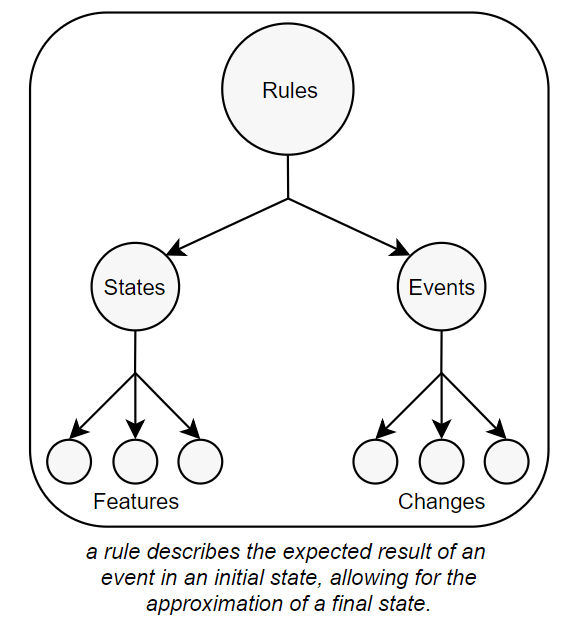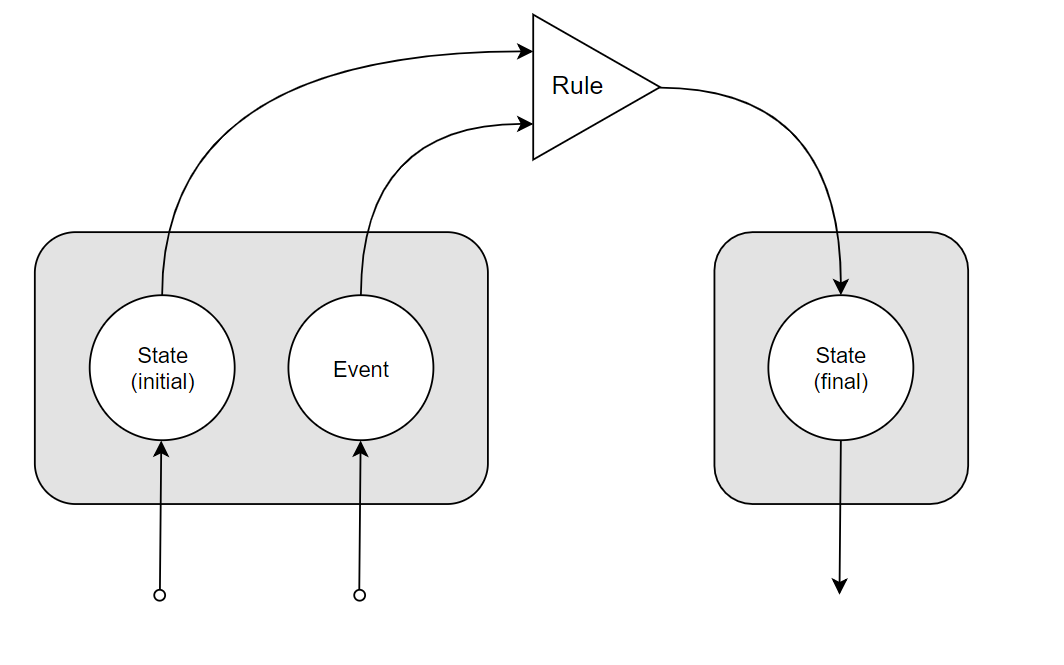Describing states and events sufficiently is a problem overcome by all existing intelligent beings, and will be faced by all of those to come in the future.
States, put simply, are collections of features arranged in a certain way that are used to describe potential configurations of the observable world. In biological systems, features originate from the senses, combining hierarchically into more complex patterns. Each level of the hierarchy take only the most useful elements from the previous layer and composes a new set of general features that are in a sense larger.
The method of composing features is determined by the sensory apparatus from which the raw data originated. Features from multiple sources are combined eventually, leading to compositions that are distinctly less straightforward. Patterns begin to look like more of a network than a hierarchy, growing in their ability to convey complex information while also increasing the risk of utter confusion and nonsense.
Clutter is a dangerous barrier that scales with intelligence, and therefore must be vanquished in order for a system to succeed. It requires that the mechanism of growth controlling the progression of an agent as it learns and interacts with the world be adequate in organizing more and more complex knowledge.
If this problem is overcome, however, an intelligent agent has been endowed with an important skill: the ability the form models of states in a reliable way. This lies at the core of all behavior which is understood to depict some level of intelligence, due to the fact that an agent with such an ability conceptualizes the layout and organization of its environment automatically, providing a strong tool with which to better achieve its goals. In a way this ability functions almost like a mini-map in a video game, except that it does not need to be viewed visually or through any other sensory apparatus because the information it provides can be processed almost instinctively through concepts.
However, one can only do so much with a static model of the world. In order for a state representation to be useful, it is important to understand how it changes. This is where events come in to play.
An event is much like a state, where a state represents a collection of features existing at once, an event represents how those features evolve over time. In other words, an event contains feature-changes that define the appearances, disappearances, increases, and decreases of particular features, among other transformations.
States and events when modeled together combine to form an ability more powerful than anything yet mentioned. That is, the ability to form predictions. Given an event and an initial state, one can predict a final state that is to result from that event taking place in said state. Over time, the experience of making correct predictions solidifies what are called rules, or predictions that are made automatically upon the observation of specific states.

Rules effectively conserve the energy that would otherwise be used to calculate predictions consciously, as each prediction requires an analysis of the current state as well as some amount of foresight as to which events are likely to occur and thus which are worthy of processing. With rules, that responsibility is carried out behind-the-scenes so to speak, enabling mental faculties to worry about other things while the predictions are churned out in the background.

